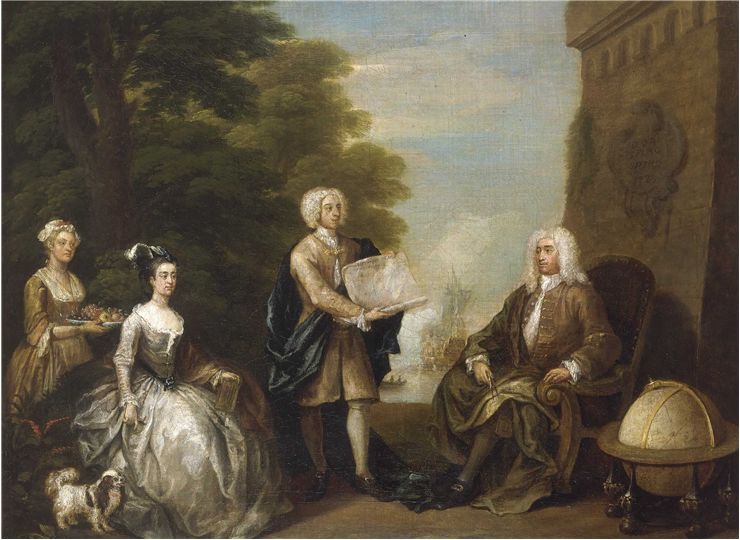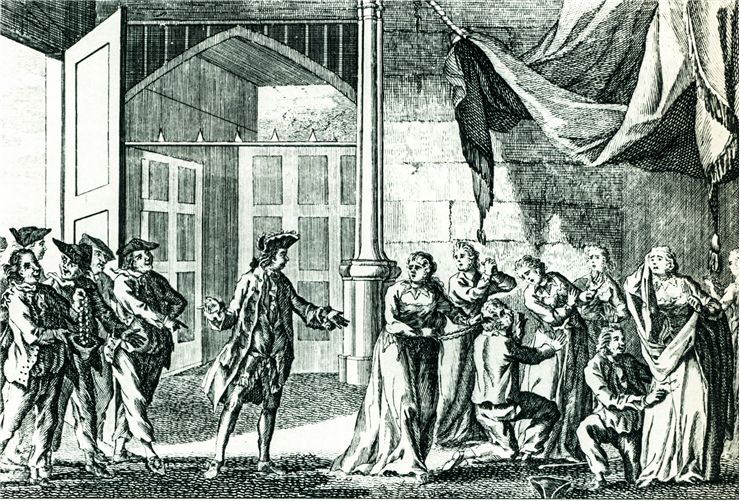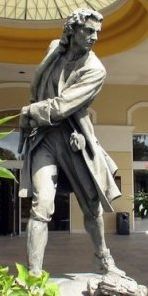Famous Privateer: Woodes Rogers
Pirate Slayer
Woodes Rogers was certainly one of the most notable persons that have ever lived in the Caribbean. This Englishman had two big obligations in his life. At first, he was a privateer and later became the first governor of Bahamas. In both duties, his main targets were the pirates . Woodes Rogers took a great part in suppressing pirates in most of the Caribbean Sea . Most of them took his offer of King's amnesty. However, even the bravest pirates, who opposed, ended their careers afterwards, most of them on a rope.
Woodes Rogers was born in Bristol, England around 1679. In the beginning of his career, Rogers was just an ordinary seaman and merchant. During the period between 1708 and 1711 he was assigned to lead a privateering expedition with two ships, the "Duke" and the "Duchess". Authorized by a group of Bristol merchants, Woodes' crew were supposed to harass the Spanish colonies throughout the coasts of Pacific.
During the trip, in 1709, Rogers found and rescued Alexander Selkirk, sailor from Scotland who had been marooned there for 4 years . Selkirk quarreled with the captain of his ship and asked to be put ashore in the one of uninhibited Juan Fernández Islands. Coincidently, Rogers ' navigator on the expedition was William Dampier, the same man who had marooned Selkirk few years before. His personality and adventures later inspired Daniel Defoe to write famous novel, "Robinson Crusoe" .
On the coast of Peru, Rogers raided several rich Spanish colonies, including the city of Guayaquil. His privateers exacted an enormous ransom from the citizens. Generally, the whole trip was very successful, and the privateers brought to England many values and one big prize ship. Rogers gained reputation and the English government appointed him to a much more dangerous task .
In 1717 Rogers was officially appointed as the royal governor of the Bahamas . That region of the Caribbean was totally overwhelmed by pirates. The local governors were corrupted. They were paid well to turn blink-eye to the pirate's actions. Without any real authorities, the pirates massively gathered there and made their private heaven, doing everything they liked. In the following year, when Rogers arrived in New Providence, there were around 2000 pirates in Nassau and other local towns. Rogers was faced with serious problem to establish well-organized government and to force the pirates to surrender.
Rogers had all the support, monetary and military from England. His main strategy was to offer the king's pardon to all pirates who would stop their activities immediately. Although a great number of pirates took amnesty, there were a dozen of the pirates who didn't think it was a good idea for them. They taught Rogers was no match for them, as many other local governors were not.
Woodes Rogers had a "worm" welcome with warring from one of the notorious pirates, Charles Vane, who was aware of his coming. He burnt a recently captured ship in front of Roger's flagship and even fired a few shots , while passing by. That was a clear message to Rogers that there were some pirates who would never accept the pardon. Therefore, he gathered many sailors and pirate hunters in order to capture or kill stubborn pirates . Rogers even recruited from among those pardoned, because they knew the way of the pirates . One of his faithful servants was a famous ex-pirate, Benjamin Hornigold.
Soon after, almost all sea-robbers in the area, were caught, sentenced, hanged or just killed in the battle. Rogers became their biggest enemy. All pirates feared and hated him. Some of them like Howell Davis just avoided Bahamas and neighboring colonies at any cost.
After three years of his battle against piracy in the Caribbean, Rogers finally returned to England in 1721, but went back to Bahams in 1729 as the new captain-general. Woodes Rogers died at Nassau in 1732. He will always be remembered as a remarkable man , the hero of the nation who expelled all pirates and brought an order to Bahamas and the most of the Caribbean Sea.


